Why Stainless Steel Cookware Deserves a Spot in Every Kitchen
Stainless steel cookware is a staple in both professional and home kitchens worldwide. Renowned for its durability, sleek appearance, and versatility, stainless steel offers a long-term solution for cooking across all heat sources. Whether you’re a home cook looking for an upgrade or a culinary enthusiast wanting better results in the kitchen, understanding this material is key to maximizing your investment.
In this comprehensive stainless steel cookware guide, you’ll learn how to choose the right type, what to expect in terms of performance, and how to maintain it for years of dependable use. Let’s explore everything you need to know about stainless steel cookware in depth.
Understanding Stainless Steel Cookware
What Is Stainless Steel?
Stainless steel is an alloy made primarily of iron, carbon, and chromium. The addition of at least 10.5% chromium creates a protective layer that resists rust and corrosion. Some high-end cookware also includes nickel, which boosts shine and corrosion resistance.
Grades of Stainless Steel (304 vs 316, 18/10 vs 18/8)
The most common stainless steel grades used in cookware are:
| Grade | Nickel/Chromium Content | Benefits |
|---|---|---|
| 18/10 | 18% Chromium, 10% Nickel | Superior rust resistance, shine, and performance |
| 18/8 | 18% Chromium, 8% Nickel | Durable and slightly less expensive |
| 304 | Standard for most cookware | Non-reactive and durable |
| 316 | Enhanced corrosion resistance | Used in marine and high-end cookware |
Higher nickel content typically indicates better corrosion resistance and durability.
How Stainless Steel Cookware Is Made
Most stainless steel cookware uses cladded construction, which involves bonding stainless steel with aluminum or copper cores. This ensures even heat distribution, since stainless steel alone is not a great conductor of heat.
Types of Stainless Steel Cookware
Frying Pans & Skillets
Used for sautéing, searing, and pan-frying, stainless steel frying pans are durable and oven-safe. Look for pans with flared edges and riveted handles for convenience and control.
Saucepans
Ideal for boiling, simmering, and reheating, these come in various sizes and are often sold with lids. A heavy-bottomed saucepan ensures even cooking without scorching.
Stockpots & Dutch Ovens
Perfect for soups, stews, and large-batch cooking. Stainless steel stockpots are durable, lightweight (compared to cast iron), and often dishwasher-safe.
Specialty Cookware
Includes roasting pans, sauté pans, pasta pots, and woks. These offer added versatility for cooks who enjoy a wide range of recipes.
Stainless Steel vs Other Cookware Materials
Stainless Steel vs Nonstick
| Factor | Stainless Steel | Nonstick |
|---|---|---|
| Durability | High | Low |
| High-Heat Use | Excellent | Limited |
| Ease of Cleaning | Moderate | Easy |
| Longevity | Decades | 1–5 years |
Stainless Steel vs Cast Iron
Cast iron excels in heat retention, but stainless steel is easier to maintain and won’t rust. It’s also much lighter.
Stainless Steel vs Copper
Copper has superior thermal conductivity, but stainless steel is more durable and affordable. Many high-end pans combine the two via cladding.
Stainless Steel vs Aluminum
Aluminum heats quickly but warps easily. Stainless steel resists deformation and doesn’t react with acidic foods.
Benefits of Stainless Steel Cookware
Durability & Longevity
With proper care, stainless steel cookware can last decades. It’s resistant to dents, scratches, and rust.
Heat Retention & Distribution
Clad stainless steel provides even cooking results, making it excellent for browning meat or simmering sauces.
Non-Reactivity with Food
Unlike aluminum, stainless steel doesn’t react with acidic or alkaline foods, preserving taste and nutrition.
Compatibility with Cooktops
Most stainless cookware is induction-compatible, unlike pure aluminum or some nonstick pans.
Drawbacks of Stainless Steel Cookware
Sticking Issues
Food tends to stick if pans aren’t properly preheated or oiled. A learning curve exists but can be overcome with practice.
Price Point
High-quality stainless steel cookware is an investment. However, its longevity offsets the initial cost.
Learning Curve for Beginners
Stainless steel doesn’t forgive mistakes. Overheating, under-oiling, or improper cleaning can lead to poor results early on.
Understanding Ply Construction
What Is Cladding?
Cladding involves bonding stainless steel with conductive metals like aluminum or copper for better heat performance.
3-Ply vs 5-Ply vs 7-Ply Construction
| Ply Count | Description | Best For |
|---|---|---|
| 3-Ply | Stainless-Aluminum-Stainless | General Use |
| 5-Ply | Additional layers for heat control | Serious Home Cooks |
| 7-Ply | Even more metal layers | Professional Chefs |
Impact on Performance
More plies mean better heat control but also increased weight and cost. Consider your cooking habits before choosing.
Choosing the Right Stainless Steel Cookware Set
Must-Have Pieces for Beginners
If you’re new to stainless steel cookware, consider starting with these essentials:
- 10- or 12-inch skillet – versatile for searing, sautéing, and stir-frying.
- 2- to 3-quart saucepan – great for heating liquids, sauces, and grains.
- 6- to 8-quart stockpot – ideal for soups, pasta, and stews.
- Sauté pan with lid – deeper than a skillet, great for cooking meats and vegetables with liquids.
Factors to Consider (Weight, Handle Design, Lids)
When selecting your cookware, keep the following in mind:
- Weight: Heavier pans usually indicate higher quality and better heat retention, though they can be harder to handle.
- Handles: Look for riveted stainless steel handles that stay cool on the stovetop.
- Lids: Glass lids are great for visibility; stainless steel lids offer better heat insulation and oven safety.
Full Set vs Individual Pieces
A full set offers uniform quality and appearance, often at a lower cost per piece. However, buying individual pieces allows for tailored selection based on your cooking habits. Many chefs recommend mixing brands to get the best from each type.
Best Brands for Stainless Steel Cookware
Here are some top-rated stainless steel cookware brands across various budgets:
All-Clad
Considered the gold standard in stainless steel cookware. Made in the USA with high-performance 5-ply and 3-ply construction. Pricey, but worth the investment for serious cooks.
Cuisinart
Offers affordable, reliable stainless steel sets. Great for beginners or home cooks seeking decent performance without a hefty price tag.
Made In
A newer brand that has quickly gained popularity. 5-ply construction, excellent design, and made in the U.S. with direct-to-consumer pricing.
Tramontina
A great budget-friendly option. Offers both 3-ply and impact-bonded base cookware. Some lines are made in Brazil or China, so check manufacturing origin if important.
Demeyere
A premium European brand. Their 7-ply construction and silvinox surface treatment enhance durability and appearance over time.
Care & Maintenance
How to Season Stainless Steel Pans (Yes, You Can!)
Though not necessary, seasoning stainless steel can improve stick resistance:
- Heat the pan until it’s hot.
- Add a thin layer of oil (with a high smoke point like grapeseed).
- Let the oil heat until just smoking, then remove from heat.
- Wipe off excess oil with a paper towel.
This creates a natural polymerized layer that helps reduce sticking.
Cleaning Tips to Avoid Stains & Discoloration
- Avoid cold water on hot pans (can cause warping).
- Use Bar Keepers Friend or baking soda paste to remove discoloration or rainbow stains.
- Soak in warm water and dish soap to loosen stubborn food.
Dealing with Burnt Food or Rainbow Tint
- For burnt food: Add water and vinegar to the pan, bring to a simmer, then scrape gently.
- For rainbow tints (caused by overheating): Use a vinegar-water solution or stainless steel cleaner.
Common Myths About Stainless Steel Cookware
Myth: Stainless Steel Is Always Nonstick
False. Stainless steel pans can become somewhat nonstick with proper preheating and oiling, but they are not inherently nonstick like Teflon.
Myth: It’s Not Safe for High Heat
Incorrect. Stainless steel excels in high-heat cooking. It’s oven-safe (up to 600°F or more) and perfect for searing and deglazing.
Myth: More Expensive Means Better
Not always. Many mid-priced brands perform nearly as well as premium ones. Pay attention to construction (ply count), weight, and warranty, not just price.
Stainless Steel Cookware for Specific Cooking Needs
Best for Browning & Searing
The uncoated surface excels at forming fond (brown bits), making stainless steel perfect for building flavor in sauces and gravies.
Oven-Safe & Dishwasher-Safe Uses
Most stainless steel cookware is oven-safe up to 500–600°F, and dishwasher-safe, though handwashing extends life.
Cooking Acidic Foods
Unlike cast iron or aluminum, stainless steel is non-reactive and perfectly safe for cooking tomatoes, citrus-based dishes, and vinegar reductions.
Eco-Friendliness & Health Impact
Is Stainless Steel Cookware Safe?
Yes. It’s considered one of the safest cookware options available. Stainless steel doesn’t leach chemicals or toxins, even at high temperatures.
BPA-Free & Toxin-Free Benefits
Stainless steel contains no PTFE, PFOA, BPA, or PFAS — chemicals found in many nonstick coatings. It’s a great choice for health-conscious cooks.
Recyclability
Stainless steel is 100% recyclable, making it one of the most eco-friendly cookware materials. Many manufacturers use recycled steel to make new products.
Buying Guide & Price Ranges
Budget-Friendly Options ($100–$200)
- Cuisinart Multiclad Pro
- Tramontina Tri-Ply
- Calphalon Classic Stainless Steel
Mid-Range ($200–$500)
- Made In 5-Ply
- Zwilling Spirit
- Hestan Thomas Keller Insignia
Premium ($500–$1000+)
- All-Clad D5 or Copper Core
- Demeyere Atlantis
- Mauviel M’Cook
Where to Buy Online & In-Store
- Online: Amazon, Made In, Sur La Table, Williams Sonoma
- In-Store: Macy’s, Bed Bath & Beyond, Crate & Barrel
Always compare warranty, country of manufacture, and return policy before purchasing.
Stainless Steel Cookware FAQs
1. Why does food stick to my stainless steel pan?
Because stainless steel lacks a nonstick coating. Ensure the pan is hot before adding oil and don’t move food prematurely.
2. Is stainless steel cookware dishwasher safe?
Yes, but handwashing is recommended to preserve the finish and prolong lifespan.
3. Can I use stainless steel cookware on induction stovetops?
Absolutely. Most stainless steel cookware is induction-compatible, especially if it contains a magnetic steel layer.
4. What’s the best way to clean burnt stainless steel cookware?
Soak in soapy water, then simmer vinegar and water in the pan. Scrub with baking soda or a stainless steel cleaner.
5. How long does stainless steel cookware last?
With proper care, it can last 20 years or more, making it a true kitchen investment.
6. Can stainless steel cookware go in the oven?
Yes. Most sets are oven-safe to 500°F or higher, but always check the manufacturer’s guidelines.
Conclusion: Final Verdict – Is Stainless Steel Cookware Right for You?
Stainless steel cookware may not be nonstick, but it’s one of the most durable, health-conscious, and versatile choices available. Whether you’re a culinary novice or an experienced chef, its benefits — from high-heat performance to chemical-free cooking — make it a cornerstone of serious kitchens.
It demands a bit of technique but rewards you with decades of reliable service. If you’re ready to invest in long-lasting cookware that promotes better browning, searing, and flavor development, then stainless steel cookware is well worth your consideration.
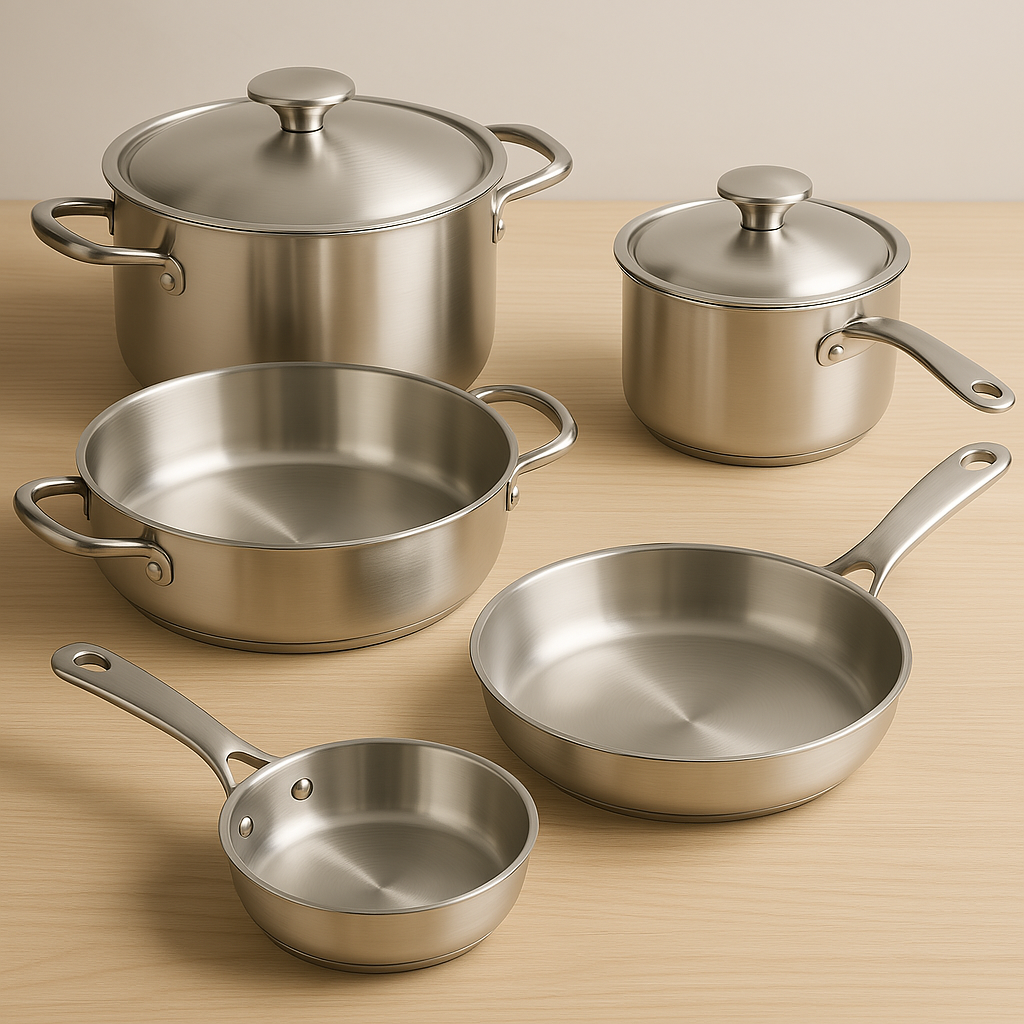

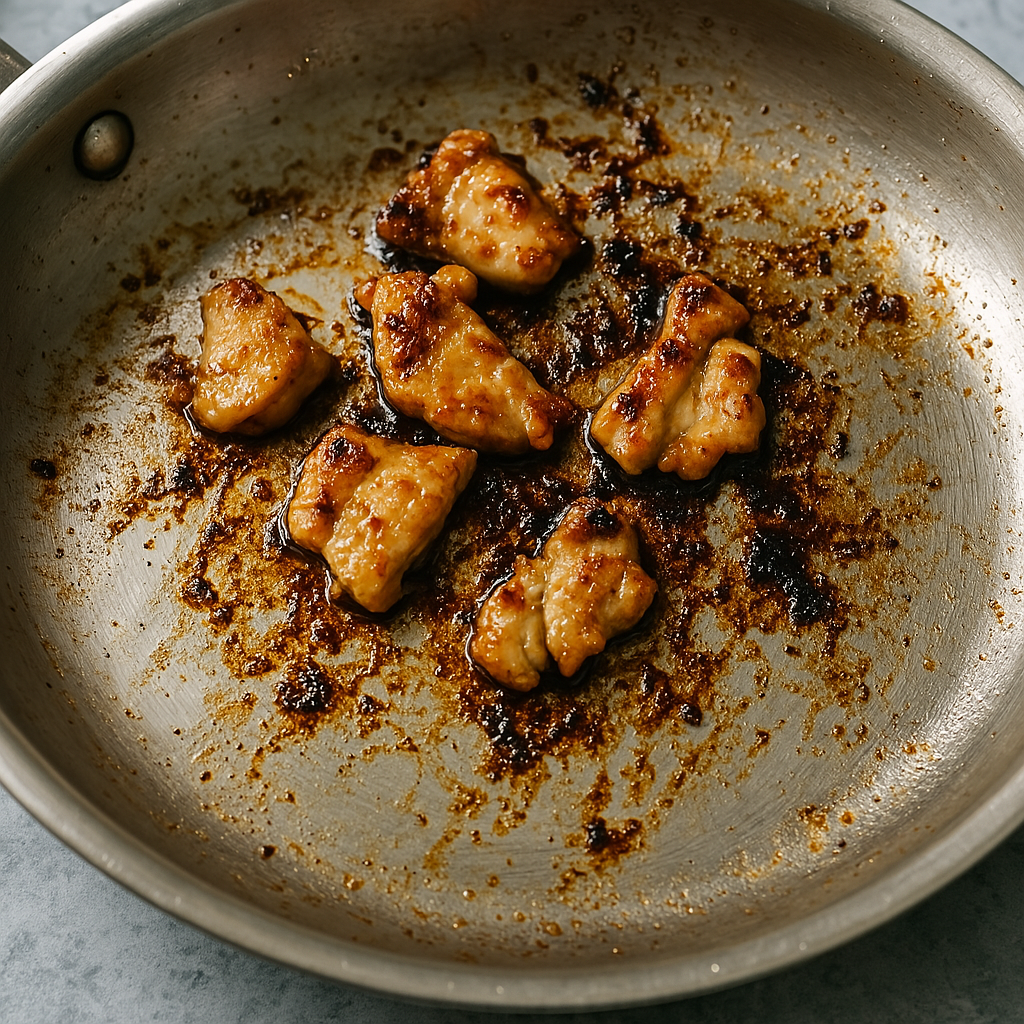
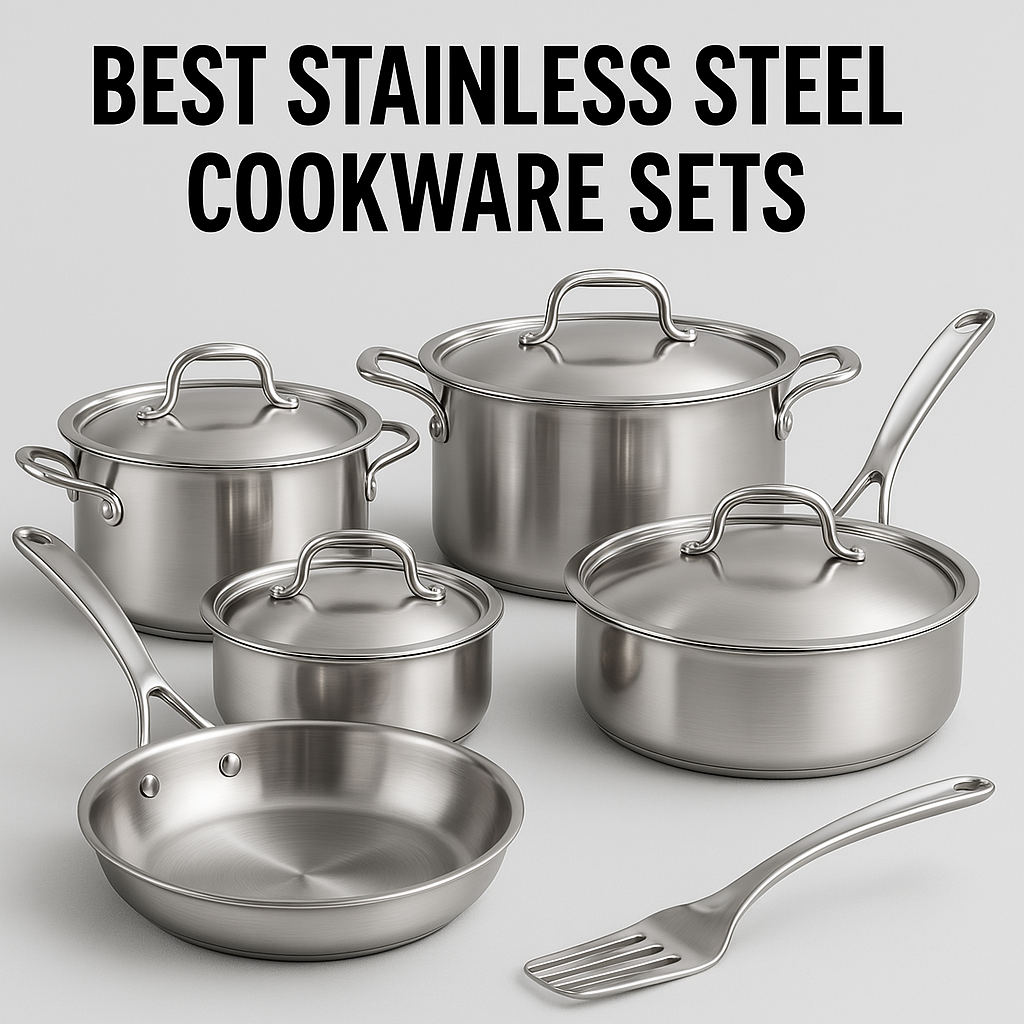
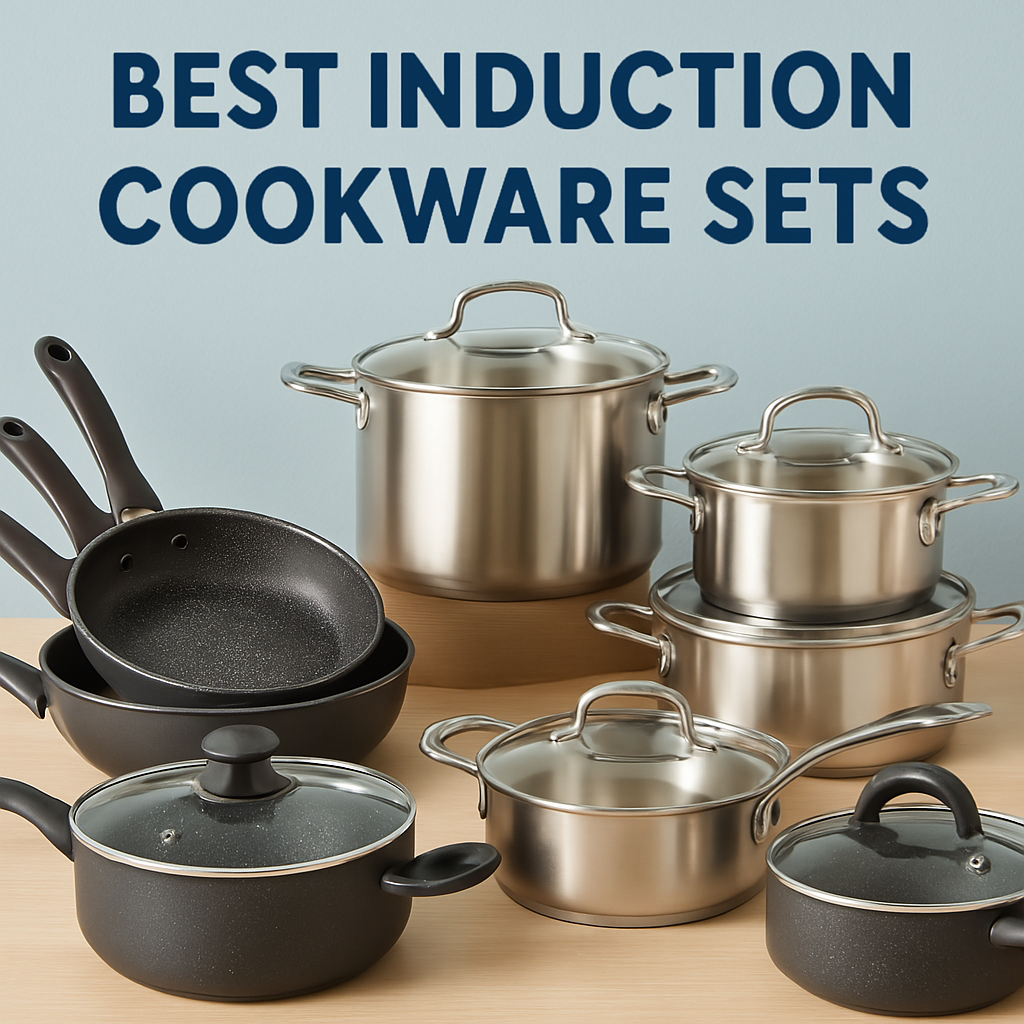
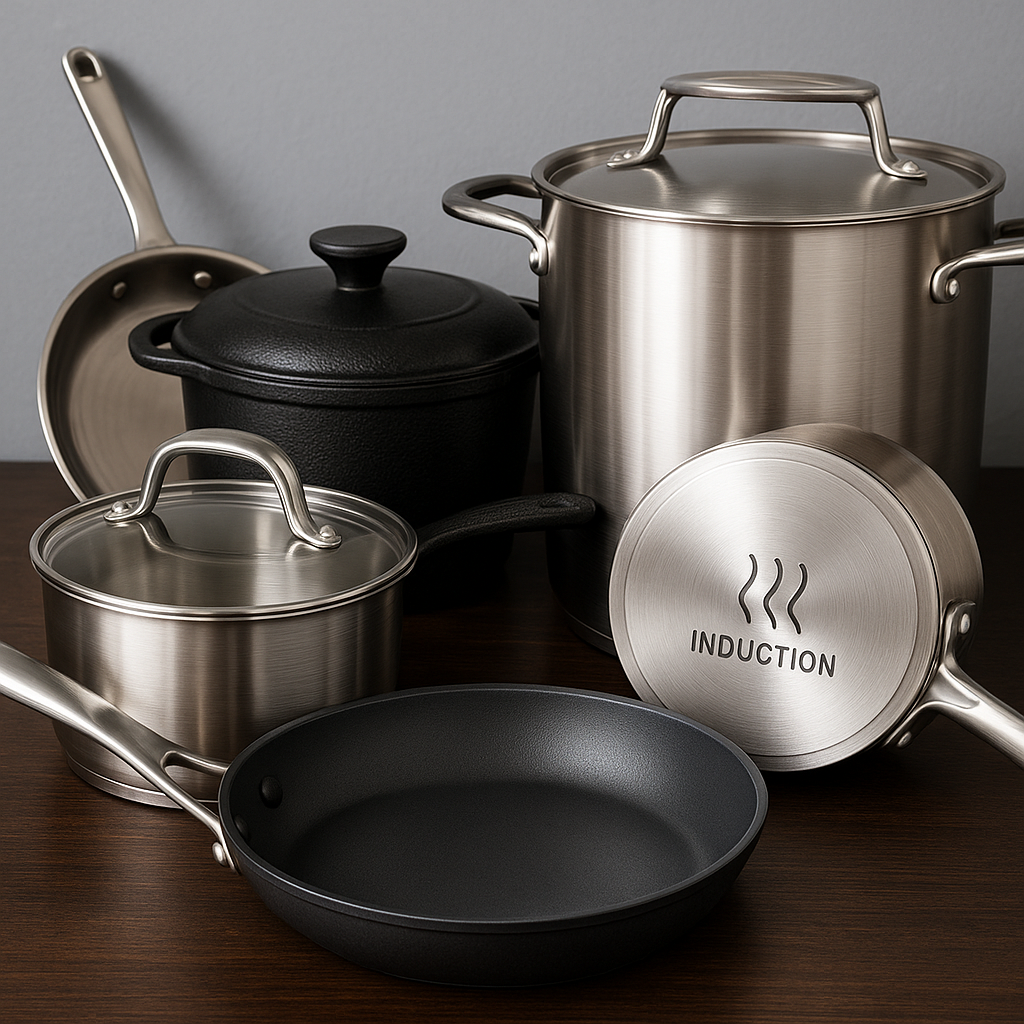
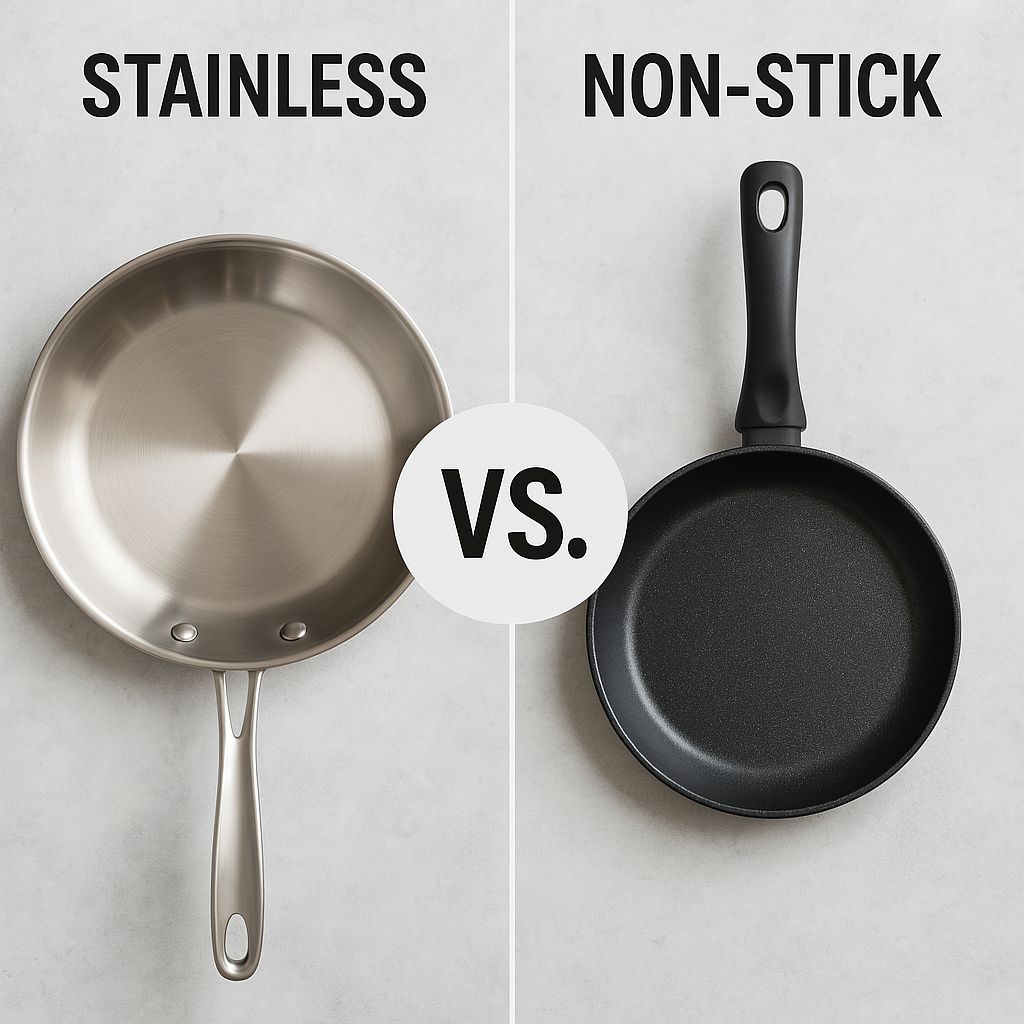
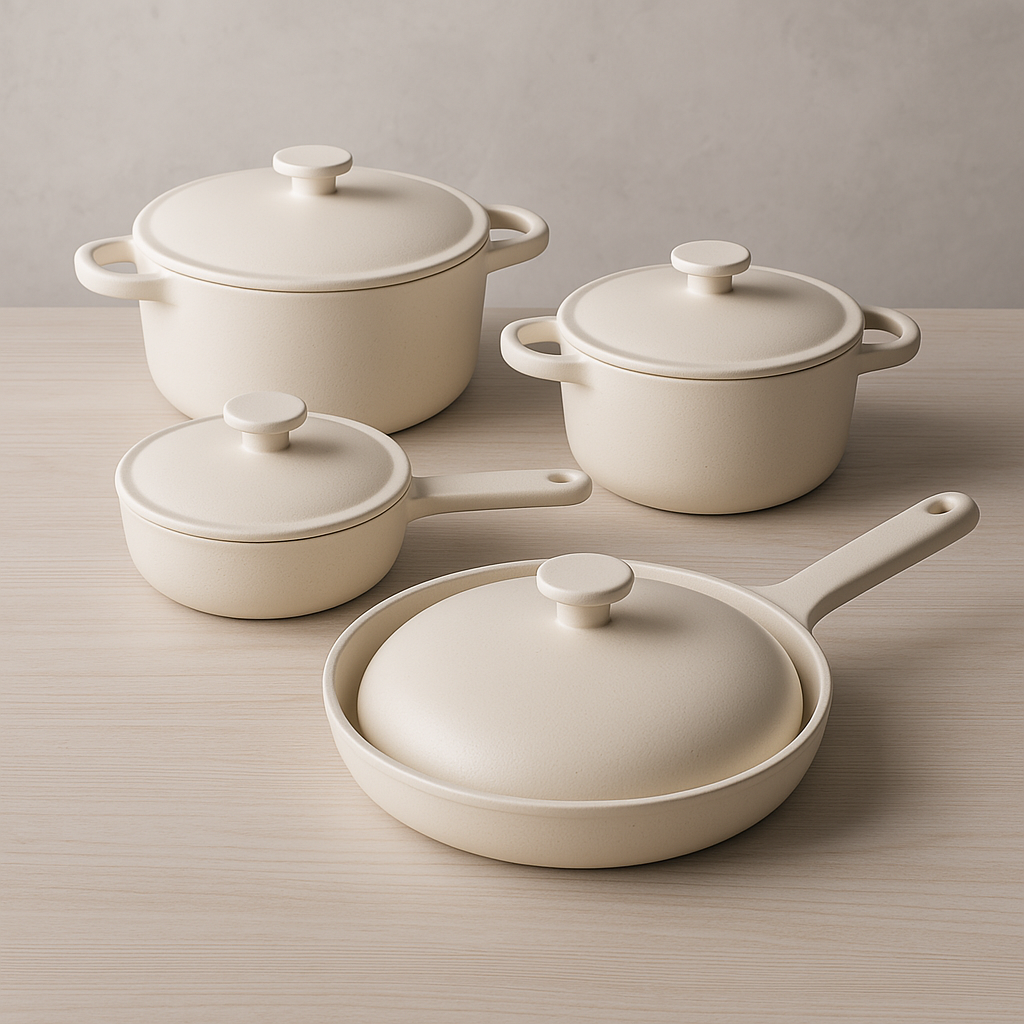
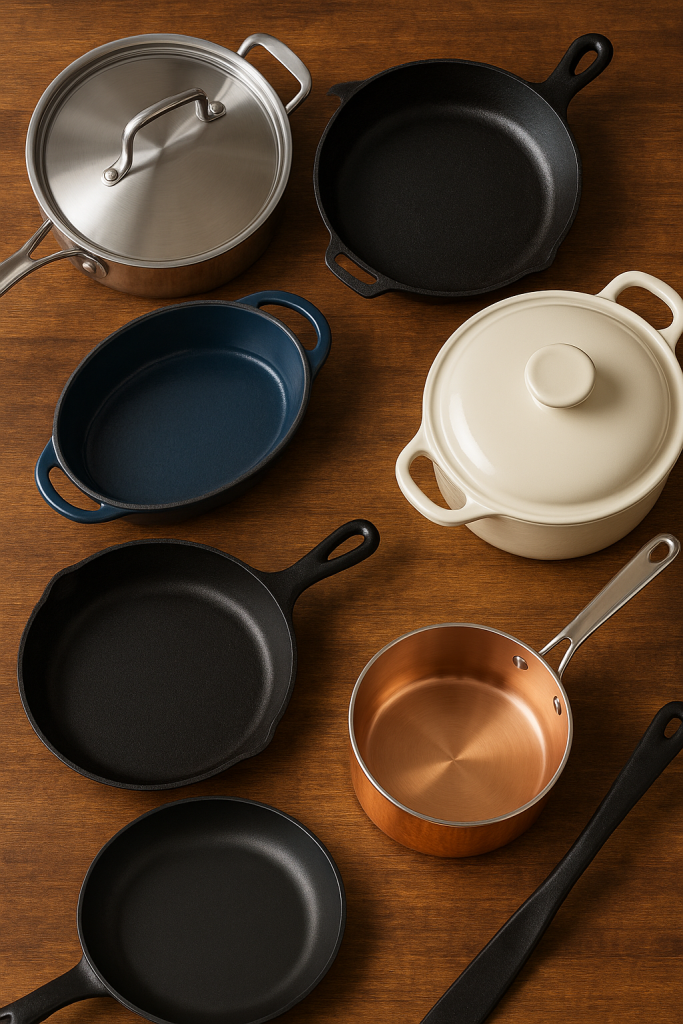
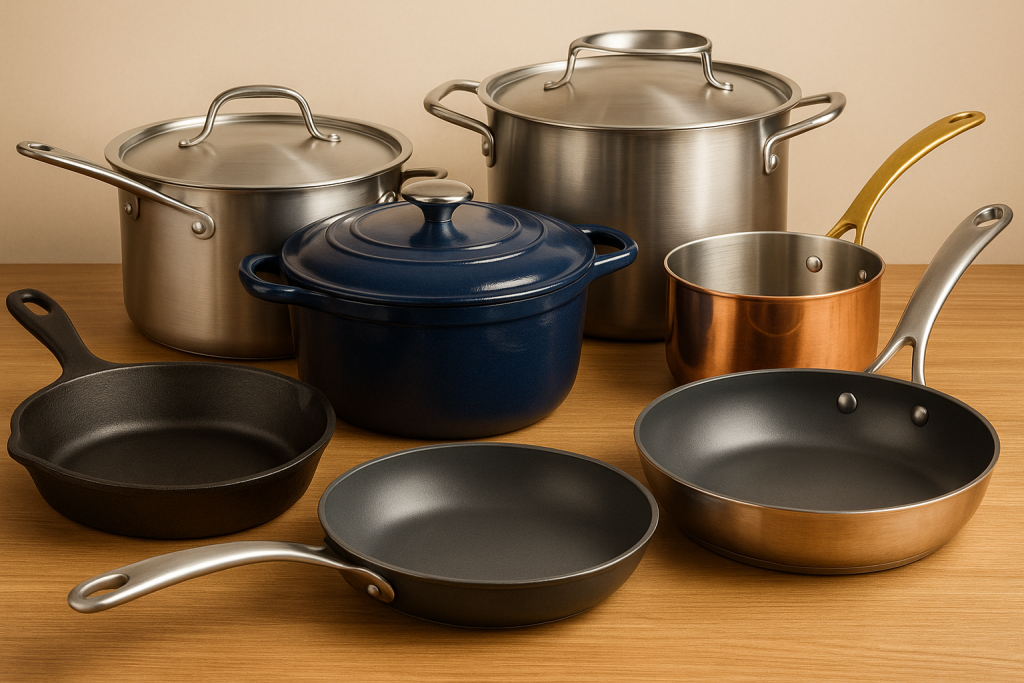
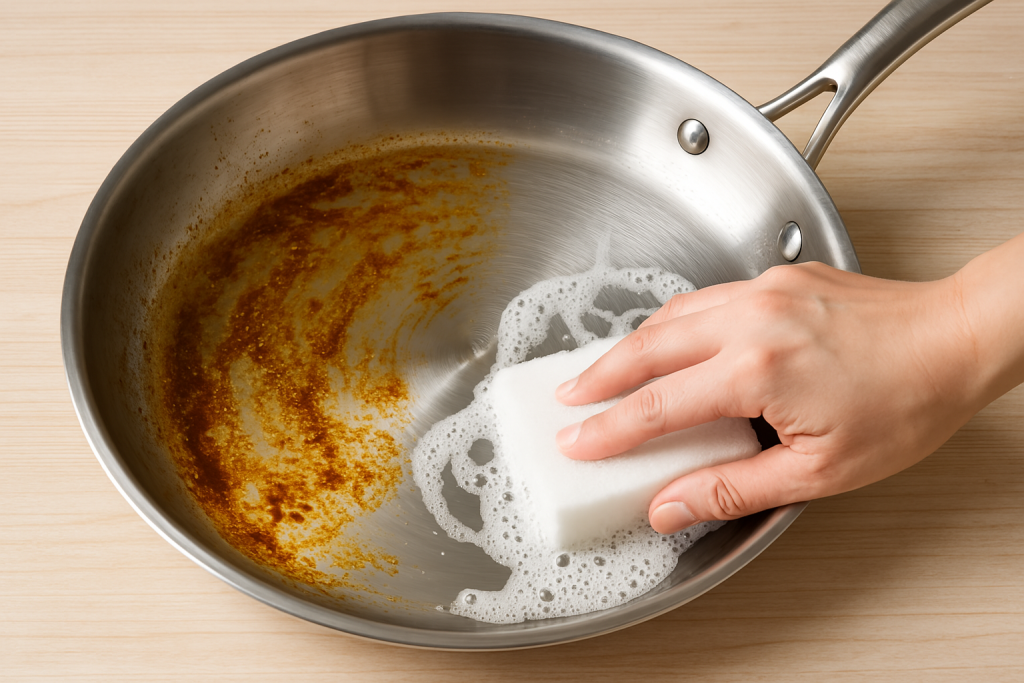
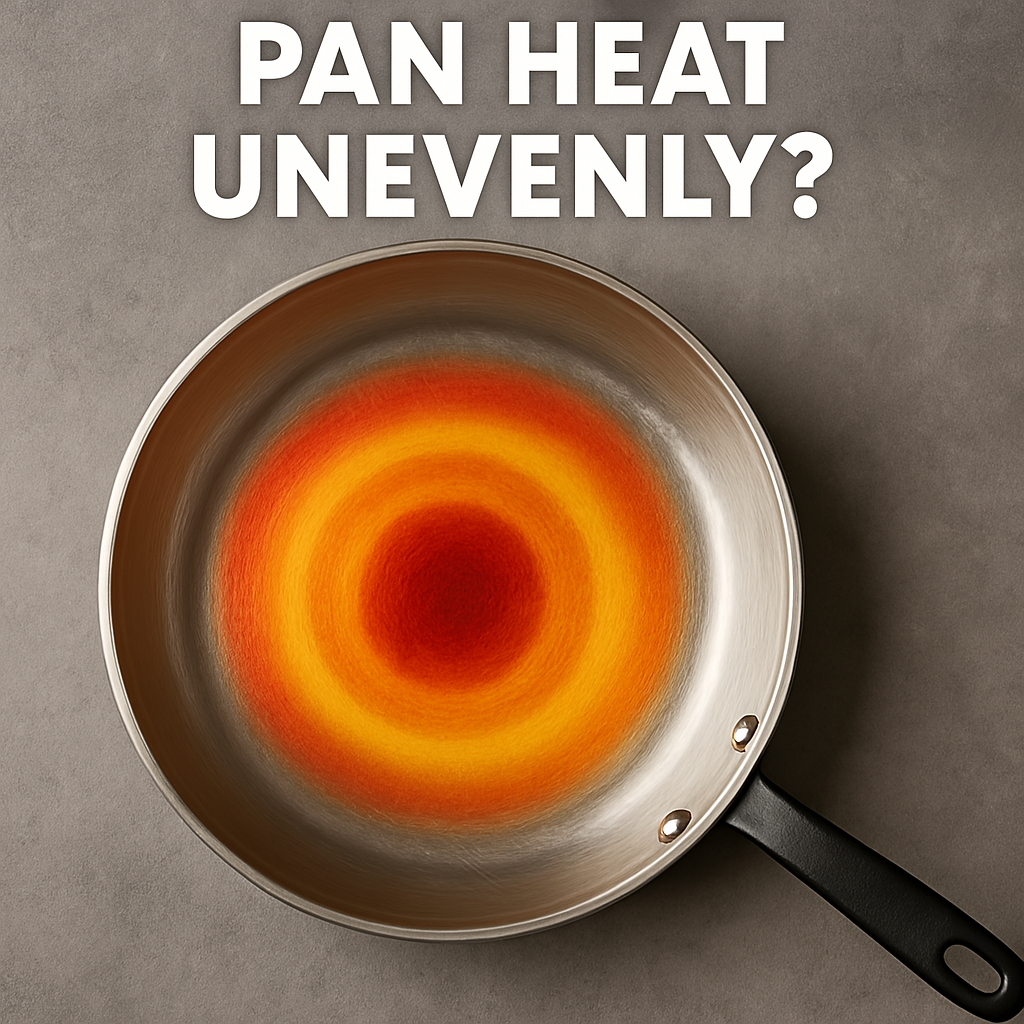
Leave a Reply